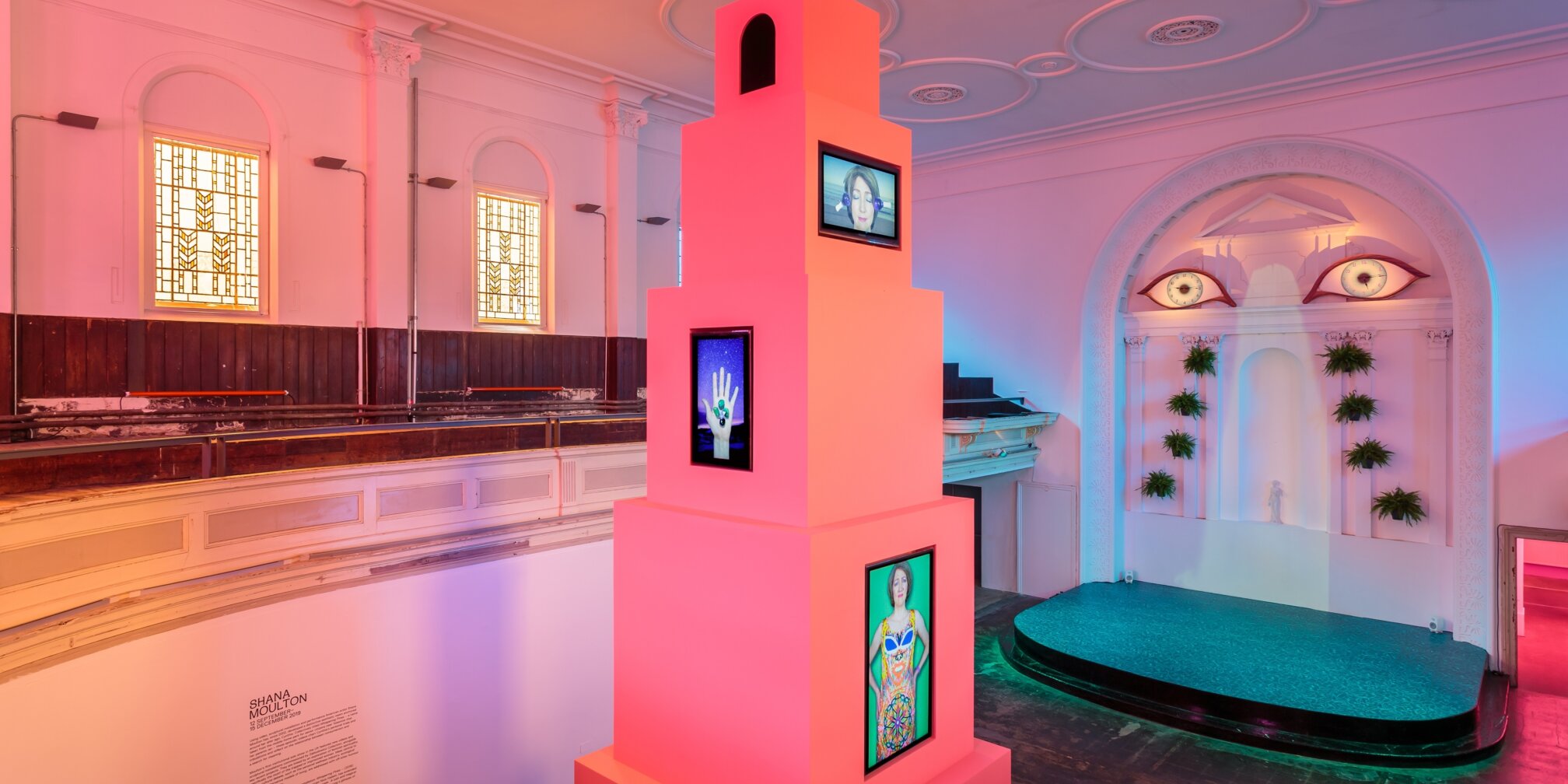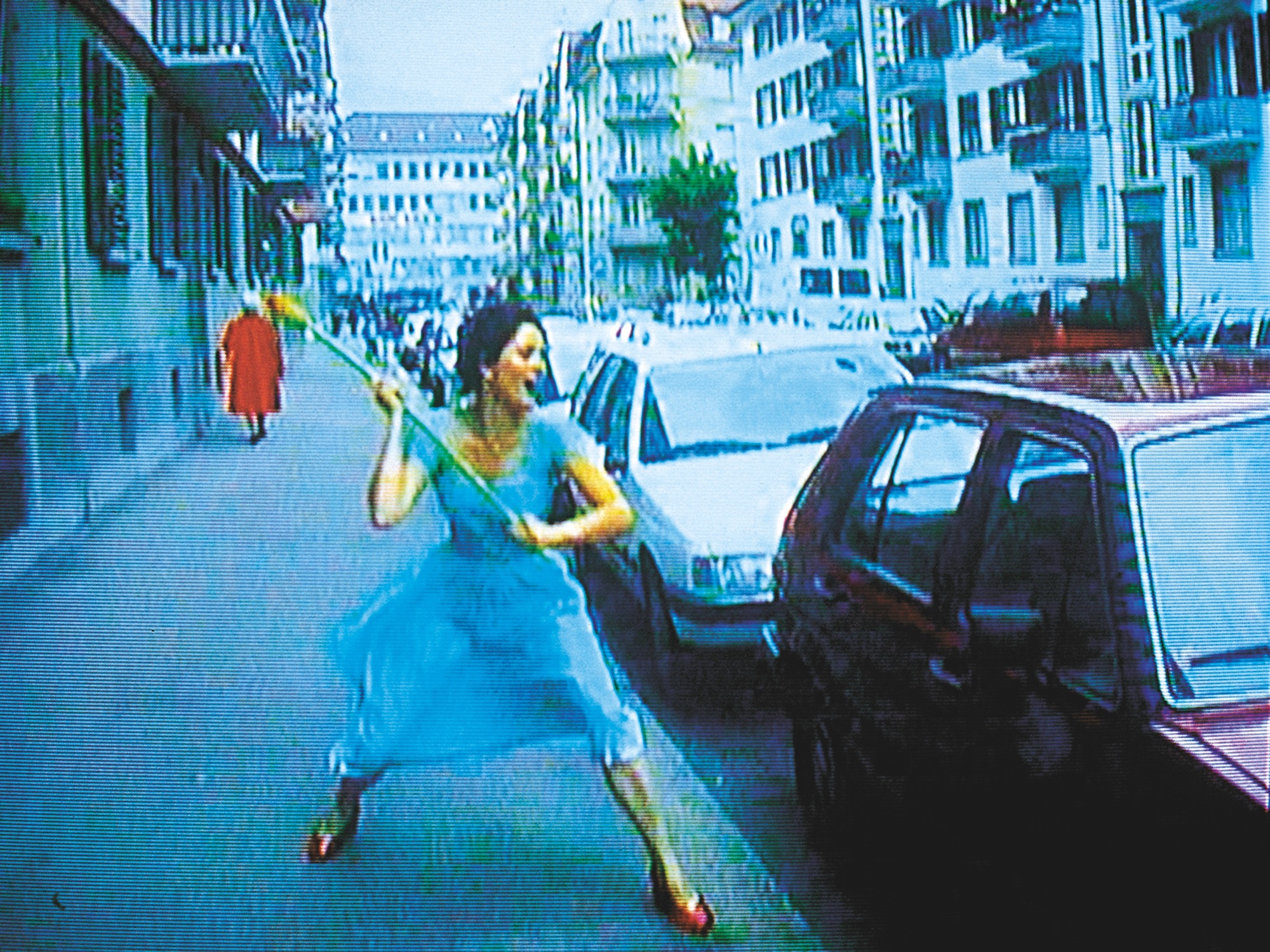

2007 was marked the darkest year for Britney Spears. Divorce, losing custody over her kids, rehab and ending up in a mental institution, all led to her infamous mental breakdown. Photographs of her shaving her hair off became a symbolic image of an enraged, fallen woman. They acted as an admonition, no one could unanimously agree against what. (Money? Fame? Being a woman and feeling incredibly fucking angry?) I remember seeing those photos in magazines as a teen: they were haunting. Scary. It was probably the first unconforming image of a woman I’ve experienced. At the time I thought her shaved head was a punishment and a deprivation of her femininity. That together with her long, blonde locks she had also lost her dignity. Today these images move me and make me feel empowered. Britney, quite literally and rightly so, lost it. That point in time wasn’t particularly special for feminism or girl power. It all already happened, starting in the 60s all the way through to the 90s, and the 2007 Britney wasn’t an image of power, quite the reverse: she was an image of a woman that hit the bottom.
Ever Is Over All, a 1997 video artwork by an artist Pipilotti Rist, bares some resemblance to the 2007 Britney Spears.
In the video, Rist herself parades through a city, smashing car windows with a flower. But she is not angry: she looks
beautiful, happy and free. Critics used works like these to brand Rist a narcissistic female vanity artist. That she
had the audacity to use pop music in her videos also awarded her the label of naïve outsider, likening her work to
populist dross on MTV.1
Even though critically scolded, what Rist did was compelling. She generated a socially
uncomfortable and harsh image: the image of female violence.
What’s so convulsing about female violence? Why is an image of a woman hitting rock bottom so jarring? Is it because
women aren’t supposed to be violent, they aren’t supposed to be broken? They are mothers, after all, forgiving, tame and
soft. They have to be cared for. Protected. They need men to carry them through the world, to fight wars for them, so
they can be mothers. Being so used to images of conforming, smiling, sexualized women, women as mothers and women as
“reproductive bodies”2, it’s easy to forget Britney’s 2007 breakdown. What’s even easier to forget is that she didn’t
die. She got up and rose again.

A loud, high-pitched scream pierces the air in the main room of the gallery. It comes out of a speaker, about two feet
below Cynthia’s mouth, amplified and dominant. Short lived. Cynthia fell, once again defeated by a pink tower of
unrealistic expectations and Internet-induced anxiety.
Shana Moulton conceived Cynthia – her pyjamas-wearing alter ego - in 2002, together with a series of videos collectively
named “Whispering Pines”. Her rises and falls are documented on video and shown on loop throughout the Zabludowicz
gallery space. She evokes a housewife, an “angel in the house or a madwoman in the attic”3, Rapunzel and sleeping beauty,
and the Cynthia-side of me when I google “homemade face mask recipes” at 2 am.
Cynthia’s eyebrows are permanently raised, giving her an expression that lays somewhere between confused, worried and
sad. She rarely seems fulfilled or satisfied, her pain – whether physical or not – is temporarily lifted after working
out or bathing. But it always finds its way back, urging her to try new ways of battling anxiety, aches and low
self-esteem.
She repeatedly falls from towers, tall trees and dream-like structures. In fact many of her falls resemble a bad dream
about falling: everything unanchors, what’s meant to be solid becomes fluid, what looks three-dimensional turns out to
be a flat hologram. Inanimate objects become alive and encircle her, forcing her to comply with the image of a woman
created by the capitalist society. Eventually she falls, defeated – she would die but she is immortal, forever looped
and trapped in a pink tower.
In 1996 Julia Lorraine Hill climbed an ancient redwood tree in a protest against deforestation and cutting down
Californian redwoods. She lived in the branches for 738 days, changing her name to Julia “Butterfly” Hill. During that
time she became spiritually enlightened, empathetic, calm and focused. She devoted her life to fighting for
environmental cause.
In “Whispering Pines part 2” Shana Moulton portrays her as a beautiful and profound woman, with a butterfly painted on
her face. She sings in a clear voice, embracing the tree, leading the way. She clearly strikes something in Cynthia,
words of her song echoing in Cynthia’s world over and over, even after she disappears. Cynthia departs, seeking the same
spiritual enlightenment, seeking “her tree”.
Today Julia Butterfly Hill’s homepage reads:
Dear Friends,
On December 18th, 1999, i returned to Terra Firma after over 2 years living aloft in the branches of my best friend, and
best teacher, Luna.
I came down to a hurting world– constantly wanting and needing my help with everything they cared about. (…) And
therefore the needs, wants, and calls on my time, person, and resources were, also, never ending.
I gave generously for over 15 years because of my deep love for all that connects us.
But the toll and price on me was too much. (…)
In the midst of all of my giving and supporting, i experienced brutal and painful beyond belief, personal challenges on
every single level– emotional, physical, spiritual, mental, and financial.
(…) The weight is too much of a burden for one person to bear. (…) 4
Similarly to Cynthia falling from a pink tower, Julia falls from her beloved tree with a high-pitched, surprised scream.
Her successes are measured in the amount of environmental protests she started, in the amount of books she published, in
the amount of wise and powerful words she had publicly given. But her spirituality and her successes weren’t enough to
save the whole world. For her – a defeat. Her strength seemed to have run out and she slowly disappeared from the public
eye. Her recent blog posts mainly consist of her reliving the experience of spending two years on top of the ancient
redwood, Luna, and offering life coaching via the website. Hardly revolutionary.
But also similarly to Cynthia - and similarly to other women who fell - her life doesn’t end. She goes on, gently,
patching up her wounds with bark of an ancient redwood tree. She goes on, living the best she can. She does go on and
that’s revolutionary enough.
Years before Cynthia’s fall, Shlomo Zabludowicz - Poju Zabludowicz’s father - became one of the very few Jews who
survived the massacre of Auschwitz. He lived, soon to become one of the most important figures in supplying weapons to
Israel, in aiding their war against Palestine. The war for land that started in 1948, an aftermath of the WW2, the
result of having no homeland and of growing anti-Semitism in Europe. The war that still goes on to this day.
I heard about it for the first time in 2018, having already gone to the gallery numerous times in the past, without any
hesitation or objection. That evening Zabludowicz were showing Lindsey Mendick in one of the smaller rooms. The gallery
was full, drinks offered free. Outside, on the street by the entrance, a group of activists held signs that said
something about boycotting, something about dealing armed weapons to Israel. They were looking at us from the other
side, asking whether we knew where money for those drinks we were holding had come from. Most of the visitors seemed to
be ignoring questions and the group entirely, so I did, too.
Only the drink I was holding felt a lot heavier all of a sudden. That drink was burning my fingers.
I went home that evening earlier than usual and a sense of guilt walked right by me, embracing me as if I was its
newfound lover. I felt stupid and angry at those protesters, it didn’t seem right that I was at fault. That I had to
think. In an impulsive attempt to relieve my shame I googled “zabludowicz family”, before going down the rabbit hole of
incomplete stories told through articles, comments and blog posts. It all felt like gossip. Like the drama of 2007
Britney Spears again. Only it was worse. It was a spotlight, pointing directly at the afflicted and severe topic of
ethical funding of the arts. It was all there, black on white. It spread so quickly and violently in my mind like a
wildfire of the Amazon, it was difficult to escape. With the Sacklers’ OxyContin leading the whole show and Anthony
d’Offay’s sexual harassment scandal walking hand in hand, and the Zabludowicz family to top it off. Israelis at war knew
as much about suffering as they knew about hurting: they’ve learnt from the best.
At the same time it was difficult to put myself, or Cynthia, in that context. Her eyebrows lifted more and more as she
sat in the portable, personal sauna, googling questions, anxious of getting old. Did Cynthia know about the protesters
and their questions? Did she have the capacity to speculate about sources of institutional money? Could have she
smuggled “where did zabludowicz family get their fortune from” among those other, predominantly egocentric questions and
would she dare do that at the gallery that hosted her?
Egocentrism plays a big role in Shana Moulton’s show. Self-obsession is pushed to the limit: a huge pair of eyes watches
everyone from the top of a tall waterfall in the main gallery. If those eyes were to represent female egocentrism,
judgmental of ageing, anxious of fine lines, conforming, in me they awaken something else: my ethical-seeking alter ego,
the guilt-ridden me, whose voice echoes over and over in my head: “what are you doing here again? Again? AGAIN?” Is that
guilt an inheritance of all those women who say “sorry” even if they haven’t done anything wrong? Is guilt a built-in
female feeling? She explains that she has been trying to differentiate between what happens to her because she is a
woman, and what happens to her because she is vain, conceited, even arrogant, lazy or unconcerned, unwise, difficult,
recalcitrant—and a woman. 5
I felt like Cynthia, imprisoned at the top of the tower. Only the tower wasn’t pink, it was a deep, almost black, red.
Dirty art. Blood money. Unethical funding systems. Is jumping off the tower the only way out?
For artists the issue is even harder, since they are debating a decision whether to accept money, knowing where it
originates. Artist Jesse Darling posted an email she received from her friend tackling the issue of Zabludowicz gallery
on her website, titling it simply A Letter From A Friend: (…) I know that making decisions about these things is
difficult - and that it is a burden which is unfair: why you should be the one to make the decision, to make a loss out
of that decision if you choose to boycott. That’s a condition of patronage now, that the life of artists is precarious
to the extent that it seems like the owners of big pieces of fixed capital can never lose out, but as an artist you can
always lose out on the little you already have. And worse, that any type of action is not just giving up on one bit of
work, but possible future work and the networking that surrounds showing things. (…) I also think the boycott that is
called for is more than a symbolic act, and that the role of the Zabludowicz collection in establishing an appearance of
(critical) culture that buttresses a politics of outright barbarism and colonial violence really does need challenging
by the artistic community. 6
If artists are willing to reject – or at least question - money offered for their art, in an opposition against
unethical funding, so should general public challenge the credibility of art institutions and sources of their
financing. In a way Cynthia is a response to the contemporary, widespread apathy: she is more likely to look for answers
that are closely related to her body, her ageing, her looking a certain way, in a ritual of seeking self acceptance and
confidence, blatantly ignoring more pressing issues. She is an imitation of a contemporary female conformity, a woman
mass-produced by consumerism. And Shana Moulton winks to us: do not deny it – just buy it.
Self-help suggests improvement can come from within, without needing external sources in a form of medication or other people, but by simply rebuilding, introspection or taking a moment for yourself. It calls for pausing and raising awareness. A lot of websites or images promoting self-help (or self-improvement) have a specific aesthetic to it: powdery colour, most often pink, calming, cute drawings depicting mostly women and suggesting actions that are considered intrinsically feminine. Are women targeted because they are considered weaker, more prone to mental breakdowns (could it be a contemporary extension of the notion of female hysteria?), or because they are more open to speaking about their mental state? The suggested actions for anxiety, depression and general feeling-like-crap are: baking cookies, taking a deep breath, texting an old friend, learning something new (though it doesn’t say what, does smashing windows count?), making a meal for one, or planning your dream vacation. Let’s forget feminism for a second: lists like this are shoving all mental issues into one sack and all humans into one box, and branding it wellness or self-help. I would rather try one of those weird, glove-with-balls gimmicks that Cynthia so dutifully uses. But self-help tips are usually created with good intentions in mind and a similar, common objective: create some time for yourself. It is what you do with that time, is entirely up to you: research Zabludowicz, smash some windows, kill loads of enemies in video games, find out about Sacklers, retrace your steps and rethink your actions; all not to feel guilty, but to feed the anger. The good kind of anger, the anger that dilapidates pink towers and encourages empathy. The anger that forges change, the 2007 bald-Britney anger, so furious that no one can ever forget. I have been feeding my anger unwittingly at first; sat in my tower I forgot there was a tower at all. I forgot there was anger. With the first dose of poison my anger awakened; yawned, stretched and looked right at me with its feline-like eyes. It’s as if I woke up, too. It all came back, tumbling down at me: I am so fucking angry. (...) My anger roars, roams, rattles. My tall, deep red - almost black - tower trembles. The first crack flourishes under my huge, military boot. It pops and spreads, like a nervous system, like a crown of a big, redwood tree. I don’t fall – I smash through it and rise.